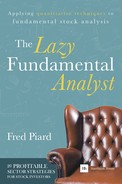Introduction
My first active experience in the financial market was to buy shares in a company and a tracker. Then I forgot them for three years. I was lucky enough that my profit on the company just about offset my loss on the tracker – but I was aware that it was just luck. So I decided to follow the People Who Know. I tried half a dozen paid services. The result of my follow-the-gurus period was no better than when I started.
The next stage was to study some technical indicators and patterns, buy software with configurable trading signals, and have a go at day trading. It involved a lot of time and stress. It also conflicted with my lifestyle – I like the idea of putting money to work for one’s life, not the opposite.
I found a better way when I began to scan with screeners and use simulation tools on the history of fundamental and technical data for thousands of stocks and ETFs. I discovered that it was possible to find good strategies that involved trading just once a month; these strategies ignored charts and the news, and removed much of the doubt and emotion.
This book is a result of those early studies which are, in effect, a simplified approach to fundamental analysis.
It may be useful to take a quick look at what we mean by fundamental analysis. A common definition of fundamental analysis is as follows:
Fundamental analysis of a business involves analysing its financial statements and health, its management and competitive advantages, and its competitors and markets.
Professional analysts undertake comprehensive due diligence before buying or recommending a stock. Their study includes financial statements, products and services, market trend, executives’ track records, legal environment, competition, partners, possible mergers and acquisitions, foreseeable events, etc. Some elements are quantitative, others are qualitative, and sometimes subjective. Such comprehensive due diligence needs a lot of work.
Most investors have neither the skills, nor the time, to perform this work. Moreover, even extensive due diligence is not a guarantee of investing success. Some erroneous data, misinterpretation, undisclosed information or unpredictable event can transform the perfect stock pick into an investor’s nightmare. This is what is called idiosyncratic risk in portfolio management: the risk linked to a special situation in a specific company.
My aim in this book is to offer a “lazy” approach to fundamental analysis, based on two principles: quantitative selection and diversification. I will show you how to choose stocks blindly, taking into account only a couple of financial ratios. Each analysis will not result in one stock pick, but at least ten. This is a minimum portfolio size to absorb most of the idiosyncratic risk and also the additional risk carried by the “laziness” of this methodology.
The strategies presented in this book are simplified versions inspired from my library of adaptable investing models. They are so simple that they may be managed in a couple of minutes every month using an appropriate stock screener. Each one is simulated on 15 years of historical data. Past performances are not a guarantee for the future, but their consistency will show you that this approach is not only lazy and simple, but I hope also smart.
My previous book, Quantitative Investing (Harriman House, 2013), was focused on ETF strategies using tactical allocation and seasonal patterns. This one is exclusively about stocks and fundamental analysis. Together, they constitute a comprehensive reference to build and manage robust portfolios.
